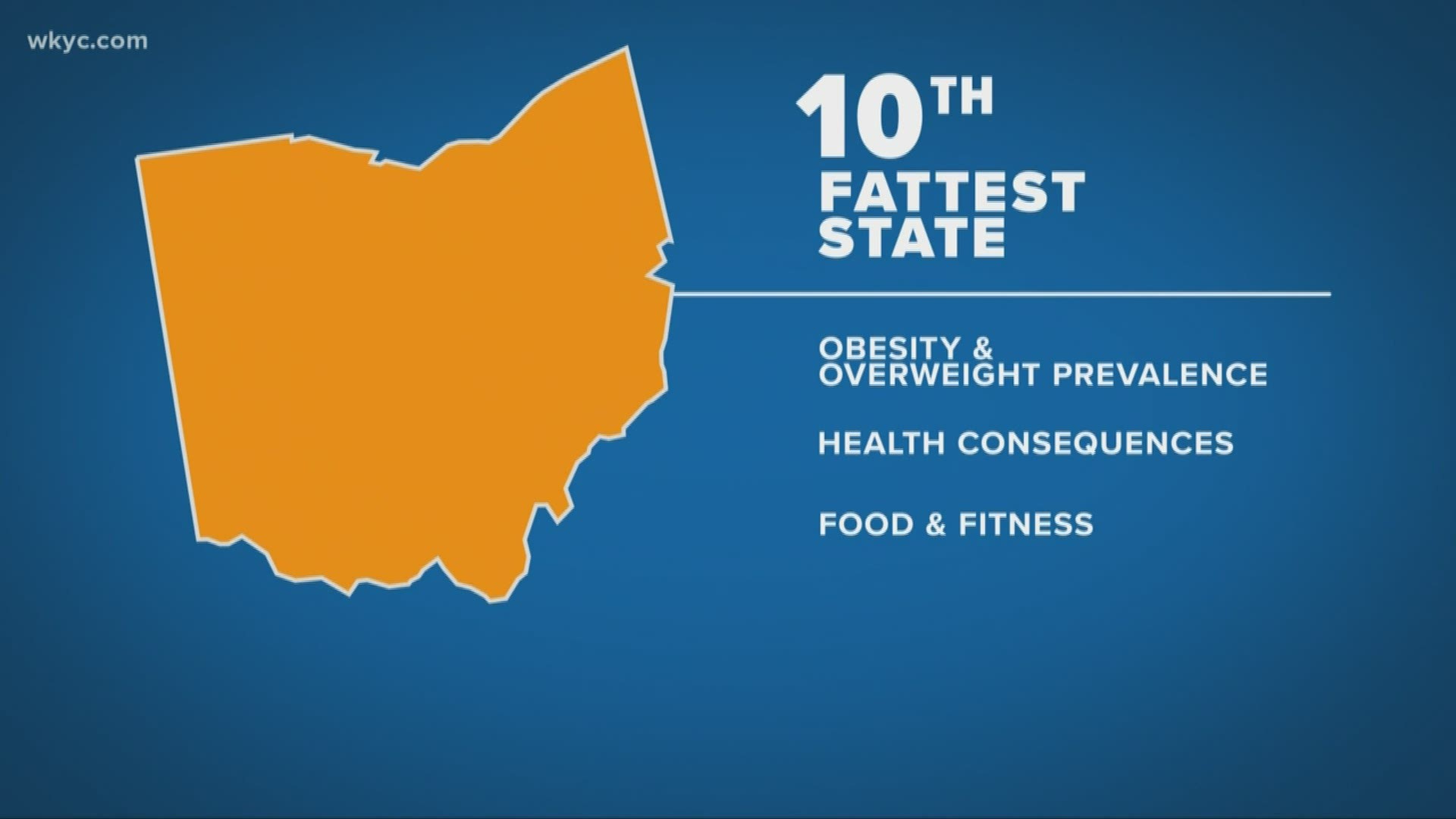CLEVELAND — Just in time for National Diabetes Awareness Month, WalletHub has compiled a list of 2019's Fattest States in America. Unfortunately for us in the Buckeye State, the news is not good.
Ohio ranks as the 10th Fattest State in the U.S. in WalletHub's study, which compared the 50 states and the District of Columbia across three key dimensions:
- Obesity & Overweight Prevalence
- Health Consequences
- Food & Fitness.
Those dimensions were evaluated using 29 relevant metrics ranging from share of overweight and obese population, to sugary-beverage consumption among adolescents, to obesity-related health care costs.
Here were more highlights from WalletHub's report on Ohio:
Obesity & Overweight Problem in Ohio (1=Fattest; 25=Avg.)
- 11th – % of Obese Adults
- 8th – % of Obese Children
- 13th – % of Physically Inactive Adults
- 28th – % of Adults with High Cholesterol
- 19th – % of Adults Eating Less than 1 Serving of Fruits/Vegetables per Day
- 14th – % of Adults with Type 2 Diabetes
- 15th – % of Adults with Hypertension
Here were the 10 Fattest States in America, according to WalletHub:
- Mississippi
- West Virginia
- Kentucky
- Tennessee
- Alabama
- Oklahoma
- Louisiana
- Arkansas
- Delaware
- Ohio
When comparing Ohio with other states in the Great Lakes region, Michigan finished No. 11 in the study, Illinois was No. 21, Indiana finished No. 23, and Pennsylvania was 24th.
WalletHub notes that Americans are collectively spending $200 billion per year on obesity-related health costs.
Experts stressed that "fatness" shouldn't be seen as a product of body weight in a vacuum, but rather lifestyle factors.
"We can't do anything about body weight, but we can do something about our food intake and inactivity," said Stephanie Turkel, an instructor at the University of North Texas' College of Merchandising, Hospitality and Tourism. "Eating healthier and moving more are things we can do – we cannot magically lose weight (however, it can be a nice side-effect of healthier practices). When people move more and eat better – more veggies and whole grains, less added fats, salt, sugar, we will be more productive."
And Hunter Waldman, an assistant professor of exercise science and kinesiology at the University of North Alabama, said that for the human body, "there is a point where the system which regulates metabolism and hunger becomes dysregulated."
"At this point, it’s no longer an argument about the individual lacking discipline to eat better or them being lazy as some might argue, but rather their internal metabolic system is now out of sync," he said.
In its report, WalletHub highlighted the need to promote more active lifestyles: It cited a report by the Physical Activity Council that said 82.1 million Americans age 6 and up were completely inactive last year.

